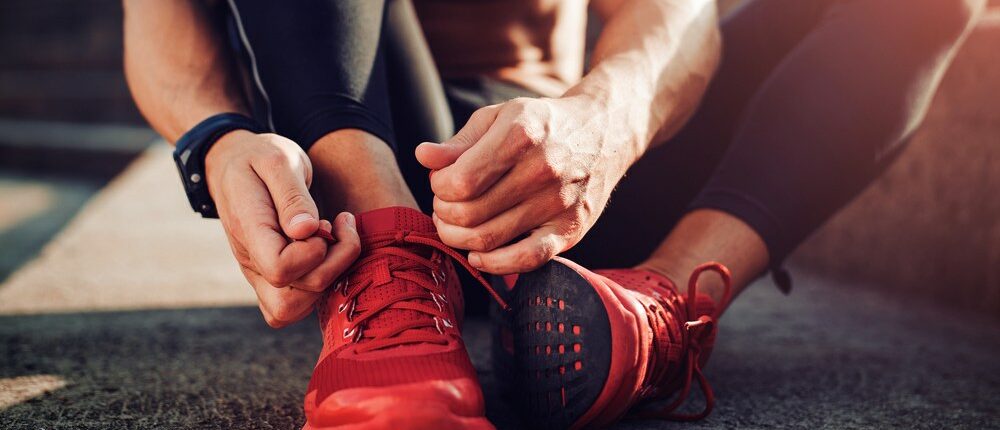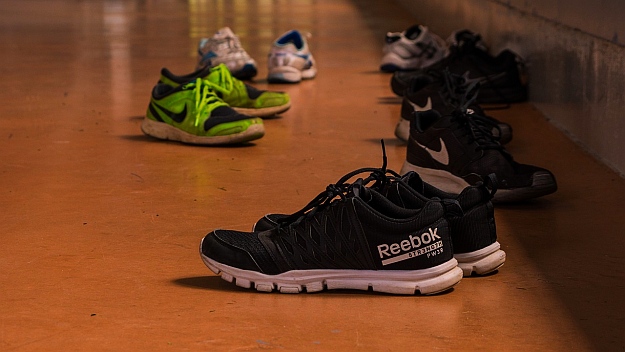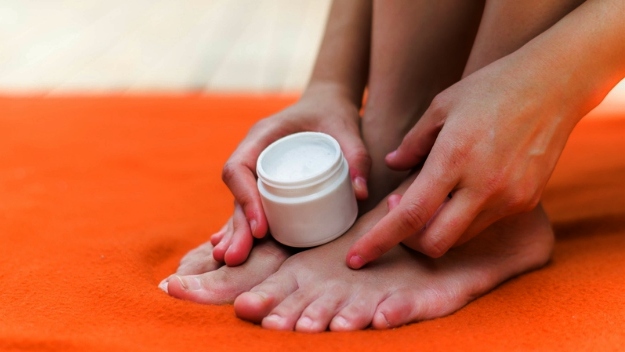

What is athlete’s foot? It’s a fungal infection that affects the skin between the toes but can also affect the hands and toenails. Athlete’s foot is highly contagious so anyone can get infected at any time. Protect yourself and learn more about athlete’s foot causes and treatments below.
7 Athlete’s Foot Treatment | Get Rid of Smelly and Itchy Feet
What Is Athlete’s Foot?

Tinea pedis or athlete’s foot is a fungal infection that creates scaling, itchiness, and rashes on the feet. The symptoms often occur between the toes and spread to the sole and the sides of the feet. The fungus causing this skin condition thrives in moist, warm environments like showers and locker rooms, which is why it often infects athletes.
Athlete’s Foot Symptoms:
- Itching between the toes and soles of the feet
- Burning or stinging between the toes and soles of the feet
- Itchy blisters
- Cracking and peeling of the skin
- Dry soles
- Raw skin
- Crumbly and discolored toenails
- Pulling away of toenails from the toes
Athlete’s Foot Causes:
- Direct contact with the skin fungus
- Exposure to areas where the fungus is present (swimming pools, locker rooms, public showers)
- Tight-fitting shoes and wet socks
Athlete’s Foot Treatment

1. OTC Medication
Most cases of athlete’s foot can be treated with topical OTC medication. These can be an athlete’s foot cream, powder, lotion, or ointment. The two common brands are Lamisil (terbinafine) and Lotrimin (clotrimazole). You can apply these topical treatments directly to the affected area for a week. If nothing works, you may need oral antifungus medication.
2. Garlic
Garlic is known for its antifungal properties, making it a good topical treatment for athlete’s foot. According to an NCBI study, ajoene (an organosulphur derived from garlic) was effective in treating 79% of the participants in just seven days. You can simply crush four garlic cloves and rub directly on the affected area twice a day.
3. Tea Tree Oil
Tea tree oil is a commonly used essential oil to fight fungal infections, such as candidiasis and ringworm. It’s no surprise that its antifungal and antibacterial properties can also treat athlete’s foot. Mix tea tree oil and warm coconut oil (mixture should be composed of 25-50% tea tree oil). After that, mix it with a carrier oil and apply to the affected area every 6 or 12 hours a day.
4. Apple Cider Vinegar
The antibacterial property of apple cider vinegar is very strong, making it another home remedy you can use. Simply make a vinegar soak with 1/2 cup of apple cider vinegar and 2 cups water. Soak the feet for 30 minutes. Another way to use apple cider vinegar is to simply apply it directly on the feet with a cotton ball.
Tip: If the soak stings, you may want to dilute more.
5. Neem Oil
Another natural remedy for athlete’s foot is neem oil, or you may also opt for neem leaf extracts. Either way, its antifungal properties will help fight off athlete’s foot. Simply apply neem oil to the affected area twice or thrice a day.
6. Powder
The fungus responsible for tinea pedis thrives in moist conditions, which is why keeping the affected area dry is a must. You can apply foot powder, baby powder, or even cornstarch to the affected foot before wearing socks. This will prevent the fungus from thriving and spreading, thus, reducing the athlete’s foot symptoms.
7. Baking Soda
Baking soda or sodium bicarbonate can actually work wonders on fungal skin infections. You can use it as a foot soak to activate its antifungal capabilities. Just add 1/2 cup of baking soda into a large basin of warm water. Soak your feet for at least 15 to 20 minutes, and dry the feet without rinsing. You can do this foot soak twice a day.
For basic home care tips for athlete’s foot, watch this video from Michigan Foot Doctors:
Athlete’s foot can be irritating and embarrassing, especially if the infection becomes complicated. The treatment options above can help free you from the burden of athlete’s foot if you take action immediately. If symptoms persist even after using several of the remedies mentioned, you should consider visiting your doctor to have it checked.
Do you have your own athlete’s foot treatment tips? Share them with us in the comments section below!
Up Next: Dermatitis Cream Over The Counter (OTC)
